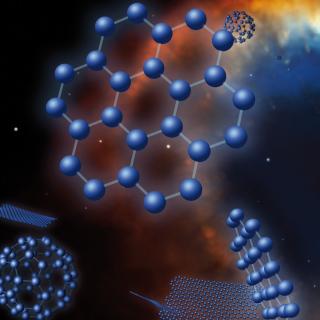Bibcode
Rossi, A.; de Ugarte Postigo, A.; Ferrero, P.; Kann, D. A.; Klose, S.; Schulze, S.; Greiner, J.; Schady, P.; Filgas, R.; Gonsalves, E. E.; Küpcü Yoldaş, A.; Krühler, T.; Szokoly, G.; Yoldaş, A.; Afonso, P. M. J.; Clemens, C.; Bloom, J. S.; Perley, D. A.; Fynbo, J. P. U.; Castro-Tirado, A. J.; Gorosabel, J.; Kubánek, P.; Updike, A. C.; Hartmann, D. H.; Giuliani, A.; Holland, S. T.; Hanlon, L.; Bremer, M.; French, J.; Melady, G.; García-Hernández, D. A.
Referencia bibliográfica
Astronomy and Astrophysics, Volume 491, Issue 2, 2008, pp.L29-L32
Fecha de publicación:
11
2008
Revista
Número de citas
22
Número de citas referidas
17
Descripción
The AGILE gamma-ray burst GRB 080514B is the first detected to have
emission above 30 MeV and an optical afterglow. However, no
spectroscopic redshift for this burst is known. We report on our
ground-based optical/NIR and millimeter follow-up observations of this
event at several observatories, including the multi-channel imager GROND
on La Silla, supplemented by Swift UVOT and Swift XRT data. The spectral
energy distribution (SED) of the optical/NIR afterglow is found to
decline sharply bluewards to the UV bands, which can be utilized in
estimating the redshift. Fitting the SED from the Swift UVOT uvw2 band
to the H band, we estimate a photometric redshift of
z=1.8+0.4-0.3, which is consistent with the
reported pseudo-redshift based on gamma-ray data. We find that the
afterglow properties of GRB 080514B do not differ from those exhibited
by the global sample of long bursts. Compared with the long burst
sample, we conclude that this burst was special because of its
high-energy emission properties, even though both its afterglow and host
galaxy are not remarkable in any way. Obviously, high-energy emission in
the gamma-ray band does not automatically correlate with the occurrence
of special features in the corresponding afterglow light.
Appendix A is only available in electronic form at http://www.aanda.org
Proyectos relacionados

Nucleosíntesis y procesos moleculares en los últimos estados de la evolución estelar
Las estrellas de masa baja e intermedia (M < 8 masas solares, Ms) representan la mayoría de estrellas en el Cosmos y terminan sus vidas en la Rama Asintótica de las Gigantes (AGB) - justo antes de formar Nebulosas Planetarias (NPs) - cuando experimentan procesos nucleosintéticos y moleculares complejos. Las estrellas AGB son importantes
Domingo Aníbal
García Hernández